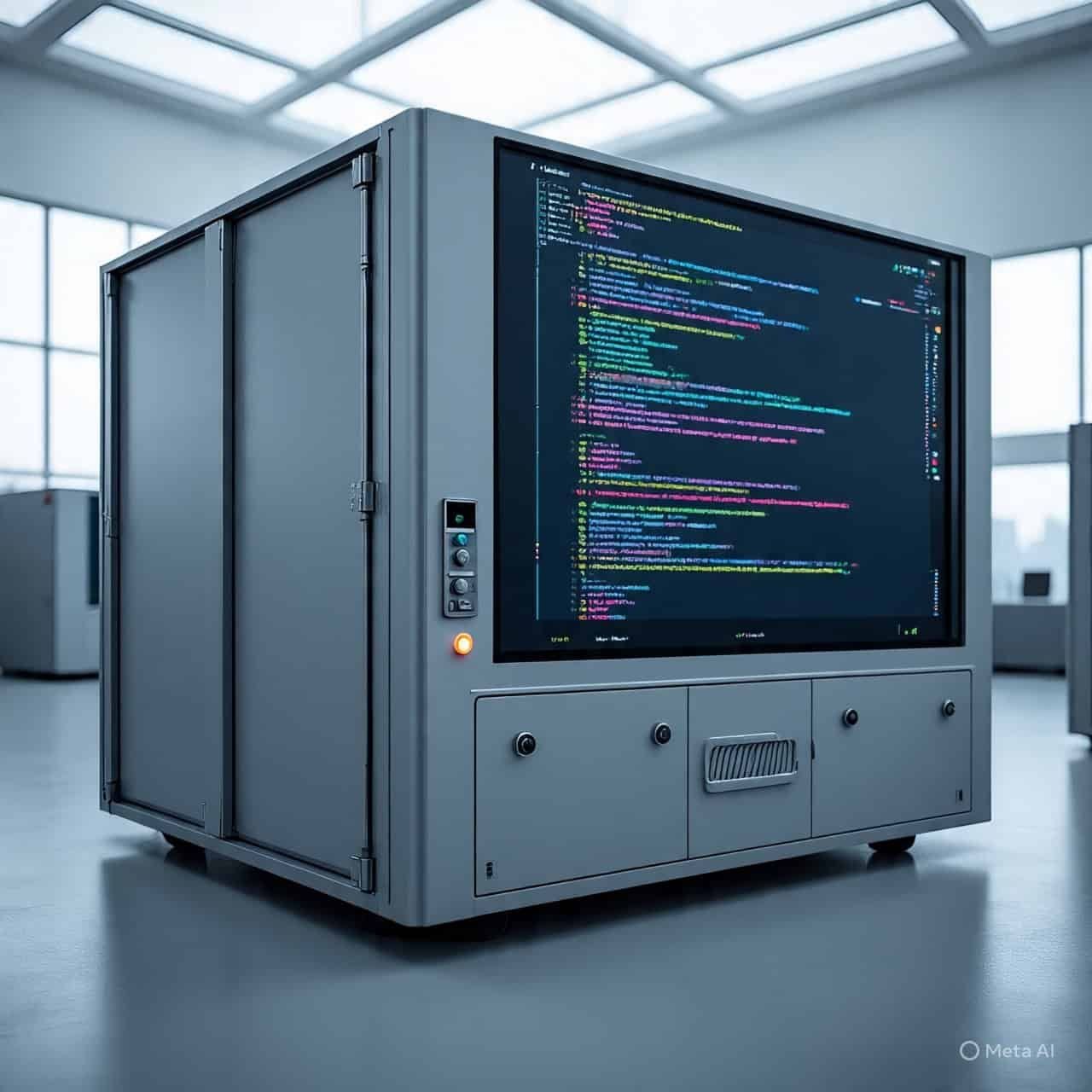How to Build Transparent Client-Developer Communication

Poor communication causes 60% of project failures. Want to avoid that? Clear client-developer communication is the key to aligning goals, preventing misunderstandings, and delivering successful projects on time and within budget.
Here’s a quick guide to improving transparency:
- Set Clear Roles: Define responsibilities for team members and decision-making authority.
- Use the Right Tools: Combine real-time communication (e.g., chat, video calls) with project management platforms.
- Resolve Issues Fast: Create a tiered system for addressing problems based on urgency.
- Involve Clients in Agile Practices: Daily updates, sprint planning, and progress reviews keep everyone aligned.
- Show Progress Regularly: Use test environments and demos to collect timely feedback.
- Track Everything: Maintain dashboards, document decisions, and log risks for full transparency.
Quick Tip: Clients value honesty – 87% are more likely to stick with companies that are open and upfront. Start building trust today by applying these strategies.
Setting Up Basic Communication Guidelines
Establishing clear communication protocols can significantly enhance transparency between clients and developers. In fact, research indicates that projects with well-defined communication structures are 30% more likely to stay on schedule [3].
Assigning Team Roles and Decision Authority
Defining roles within the team is essential to avoid confusion and ensure smooth decision-making. Each team member should have a clear understanding of their responsibilities and authority. Here’s an example of how roles can be structured:
| Role | Key Duties | Decision Authority |
|---|---|---|
| Product Owner | Define business requirements and prioritize features | Set product direction and develop user stories |
| Technical Lead | Make architecture decisions and establish code standards | Oversee technical implementation and tool selection |
| Project Manager | Manage timelines and allocate resources | Plan sprints and ensure deliverables are met |
| Client Stakeholders | Communicate business goals and approve budgets | Validate features and approve scope changes |
Once roles are clarified, the next step is to choose communication tools that align with these responsibilities.
Choosing Communication Tools and Methods
Selecting the right tools early on can set the tone for effective collaboration. During the initial client discussions, consider these options:
- Real-time Communication Tools
Tools like chat apps and video conferencing software are invaluable for instant updates and discussions. They also provide logs for future reference. - Project Management Platforms
These platforms allow clients to engage directly in tasks like backlog creation and task tracking, ensuring everyone stays aligned.
A thoughtful choice of tools ensures that communication remains seamless throughout the project.
Creating Issue Resolution Paths
A structured approach to resolving issues can prevent delays and build trust between all parties. Consider implementing a tiered issue resolution process, such as the one outlined below:
| Issue Level | Response Time | Escalation Path |
|---|---|---|
| Critical | Within 1 hour | Direct contact with the Technical Lead |
| High | Within 4 hours | Reviewed by the Project Manager |
| Medium | Within 24 hours | Addressed during regular sprint planning |
| Low | Next sprint cycle | Prioritized in the project backlog |
Using Agile Methods for Better Teamwork
Agile methods are all about fostering clear and open communication between clients and developers. According to Forbes, tasks completed through collaborative efforts show a 64% higher retention rate [9]. By emphasizing basic communication principles, agile practices encourage ongoing client feedback and iterative progress.
Running Daily Client Update Meetings
Daily 15-minute stand-up meetings help establish a steady rhythm for communication. Keeping these meetings short and focused ensures they remain efficient and transparent:
| Meeting Component | Purpose | Time Allocation |
|---|---|---|
| Progress Updates | Team members share completed work | 5 minutes |
| Upcoming Tasks | Discussion of the day’s objectives | 5 minutes |
| Blockers | Identification of challenges | 5 minutes |
“When executed well, the stand-up minimizes additional catch-up meetings.” [5]
During these meetings, every team member answers three key questions:
- What did you accomplish since the last meeting?
- What will you work on before the next meeting?
- What obstacles are blocking your progress? [4]
This structure keeps the team aligned and ensures that any challenges are addressed promptly.
Planning Sprints with Client Input
Including clients in sprint planning makes a huge difference. Their involvement ensures that priorities are clear and resources are used wisely. Jonathan Roger, Operations Director and Certified Scrum Master at AndPlus, shares a practical approach:
“One way that we keep track of scope with our clients is by using different colored task cards on our project management wallboard to represent items that were added after a release plan was created. This makes it visually easy (for both us and the client) to identify items or features that were added after the initial project scope, so need to be traded with another feature of equivalent development hours in order to stay within budget, or postponed to a later release.”
– Jonathan Roger [6]
The Product Owner plays a crucial role here, regularly updating the development team on shifting business goals and customer feedback. This ensures that each sprint aligns with the product’s overall objectives [6].
By integrating client feedback into sprint planning, teams can adjust deliverables to match evolving needs and priorities.
Reviewing Project Progress Together
Frequent progress reviews are essential for keeping clients and developers on the same page. These sessions offer several clear advantages:
| Review Component | Benefit | Outcome |
|---|---|---|
| Feature Demonstration | Provides direct client feedback on functionality | Enables immediate adjustments |
| Progress Metrics | Offers a transparent view of development pace | Improves resource allocation |
| Risk Assessment | Identifies potential issues early | Encourages proactive solutions |
“Project success is dependent upon communicating the correct information to the appropriate stakeholders, using clear and relevant language that resonates with the audience.”
– Project Management Institute (PMI) [7]
Sprint reviews create a feedback loop where teams can make quick adjustments and refine the product as needed [8]. By showcasing work-in-progress, developers and clients can catch misunderstandings early, saving both time and resources in the long run.
Showing Work Progress for Quick Client Feedback
Regularly showcasing work progress helps maintain transparency and ensures projects stay aligned with client expectations. This approach fosters timely feedback and minimizes misunderstandings. The first step in this process is establishing a well-structured test environment.
Setting Up Client Test Environments
Creating a test environment that closely resembles the production setup while maintaining data security is key to gathering actionable client feedback. Here’s a typical setup:
| Component | Purpose | Key Consideration |
|---|---|---|
| Test Server | Running the application | Use hardware with production-like specifications |
| Network Setup | Secure client access | Implement VPN or encrypted connections |
| Test Data | Realistic testing scenarios | Anonymize production data for security |
| Monitoring Tools | Track performance | Enable real-time metrics and logging |
It’s important to validate the test environment regularly to ensure all components perform as expected and provide a reliable platform for client testing.
Presenting New Features Regularly
When showcasing new features to clients, focus on the business benefits rather than technical details. Start by addressing the problem the feature solves, then demonstrate its practical application. Here’s how to structure these presentations:
- Start with the “Why”
Begin by explaining the business impact and user benefits of the feature. This helps clients see its value before diving into technical explanations. - Demonstrate Real-World Scenarios
Show how the feature works using examples that align with the client’s business operations or goals. - Organize Feedback Effectively
Use a structured method to collect and act on client feedback. For instance:Feedback TypeCollection MethodImplementation TimelineCritical IssuesImmediate loggingAddressed within 24–48 hoursEnhancement RequestsAdded to feature backlogReviewed in the next sprintUI/UX SuggestionsDiscussed in design reviewsIntegrated during weekly updates
This approach ensures client input is systematically addressed, keeping the project on track.
Tracking Code Changes and Updates
Clear documentation of code changes is essential for transparency and collaboration. Version control systems can help track:
- Change Logs: Record significant updates and their effects on the project.
- Version History: Keep a detailed record of major releases and new features.
- Issue Resolution: Link code changes directly to client requests or reported problems.
Visual tools that track progress can further bridge communication gaps, ensuring both developers and stakeholders stay on the same page. This clarity builds trust and keeps projects moving smoothly.
Build Your Dream Software
Partner with OpenArc for custom software development solutions. Let us help you create innovative software tailored to your needs. Ready to discuss your software integration project?
Tracking Project Data and Documentation
Tracking project data and documenting decisions are essential for keeping clients informed and ensuring timely decision-making. Regular updates and client demonstrations allow for immediate feedback, while detailed documentation and risk tracking promote transparency throughout the project’s lifecycle.
Building Project Progress Dashboards
Project dashboards offer real-time insights into how a project is performing. To make them effective, design dashboards that focus on key objectives while presenting information in a way that’s easy for non-technical stakeholders to understand.
| Dashboard Component | Purpose | Essential Metrics |
|---|---|---|
| Budget Overview | Financial tracking | Planned vs. actual spend, burn rate |
| Timeline Status | Schedule monitoring | Milestone completion, sprint velocity |
| Quality Metrics | Code health | Bug count, test coverage, deployment success rate |
| Resource Allocation | Team utilization | Developer hours, task distribution |
Tailor dashboard views to suit different stakeholders. For example, executives may need high-level KPIs, while developers benefit from detailed technical metrics. In addition to visual dashboards, maintain thorough documentation of technical decisions and potential risks to ensure transparency remains a priority.
Recording Technical Decisions
Documenting technical decisions helps maintain continuity and clarifies the reasoning behind choices. A widely recognized approach is using Architectural Decision Records (ADRs), which can enhance team alignment [10].
Key elements of a technical decision record include:
- Decision Context: Background details and business requirements.
- Considered Alternatives: Options that were evaluated during the decision-making process.
- Impact: How the decision affects the timeline, budget, and current features.
- Client Approval Status: Formal sign-off from key stakeholders.
Listing Project Risks and Solutions
Beyond tracking metrics and decisions, it’s crucial to log project risks and outline strategies to address them. A structured risk tracking system enables teams to identify, analyze, and monitor potential issues effectively.
| Risk Level | Documentation Requirements |
|---|---|
| High | Detailed mitigation plan, weekly status updates |
| Medium | Action items, monthly progress review |
| Low | Basic monitoring, quarterly assessment |
“Communicating risk is not easy, especially on projects that have a lot at stake. When risks occur on projects, which they will, the desire to keep everyone happy can get in the way. Communicating the risks clearly and effectively to your clients and stakeholders as soon as you identify them is the kindest thing you can do for a project.” – Nicole Haglund, Former lead project manager, Pixo [11]
To manage risks effectively, document clear action plans and assign ownership to ensure accountability. Regular risk reviews help teams stay aligned on current challenges and solutions, demonstrating a proactive approach to risk management.
Getting and Using Client Feedback
Gathering and effectively using client feedback is a cornerstone for ensuring that project outcomes align with client expectations and goals.
Explaining Technical Details to Clients
When explaining technical aspects, focus on how they impact the client’s business. For example, research indicates that using visual aids can improve understanding by 36% [12]. This means you should use tools and methods that simplify complex ideas, bridging the gap between technical jargon and practical business outcomes.
| Communication Level | Approach | Supporting Materials |
|---|---|---|
| Executive | High-level business outcomes | KPI dashboards, ROI projections |
| Management | Feature impacts and timeline | Process flows, milestone charts |
| End Users | Functionality and usage | Screenshots, interactive demos |
To make technical topics relatable, analogies work wonders. For instance, you can liken database optimization to organizing a filing cabinet – everything is sorted for quicker access. This approach not only simplifies the conversation but also fosters transparency and trust, which are key to maintaining a collaborative client-developer relationship.
Testing with Client Teams
Once technical details are clear, involving clients in hands-on testing becomes crucial. This step ensures the software is practical and meets the client’s real-world needs while keeping the development process transparent.
Set up testing environments that closely replicate actual production settings. This allows clients to evaluate features in a context that feels familiar. During usability tests, encourage clients to use a think-aloud protocol – where they verbalize their thoughts as they interact with the software. Recording these sessions provides valuable insights for refining the product.
Reviewing Change Request Effects
Client feedback often leads to change requests, and managing these efficiently is vital to keeping the project on track. A structured change control process ensures all modifications are thoroughly evaluated before implementation.
| Impact Level | Assessment Criteria | Response Time |
|---|---|---|
| Critical | Business-critical functionality | Within 24 hours |
| Significant | Feature modifications | 2-3 business days |
| Minor | Design tweaks | Next sprint planning |
“It has to be made clear from the beginning that everything is defined by a specification and that any change has to go through a change order. Change order means that on notification, work stops, impact is evaluated and a new proposal is submitted. If agreed, work restarts with a new spec.” – Jean-Francois Debroux, Senior Analog ASIC Designer [13]
When evaluating change requests, use traceability tools to identify affected components and assess both immediate and long-term impacts. Conduct impact analysis meetings to address critical areas such as:
- Adjustments to timelines
- Additional resource needs
- Technical challenges
- Budget implications
Conclusion: Creating Strong Client Partnerships
Developing strong client partnerships naturally stems from clear and open communication. When clients and developers maintain transparency, it fosters trust and ensures smoother collaboration.
Transparency isn’t just a buzzword – it delivers real results. For instance, in 2024, a case study highlighted how honest discussions about design changes not only avoided delays but also reinforced trust between all parties involved.
“Trust is the lubrication that makes it possible for organizations to work.” – Warren Bennis [2]
The foundation of strong client partnerships lies in consistent practices, as shown below:
| Practice | Outcome | Benefit |
|---|---|---|
| Regular Progress Updates | 94% of consumers value brands that are upfront about their practices [1] | Real-time project visibility |
| Proactive Issue Resolution | 30% boost in client satisfaction scores | Reduced project risks |
| Transparent Decision-Making | 81% of consumers consider trust a key factor in their decisions [14] | Better informed choices |
At OpenArc, we integrate transparent practices into everything we do – it’s one of our core values, and the origin of “Open” in our name. This approach ensures our clients feel informed, appreciated, and empowered at every stage of the project.
FAQs
How do agile practices improve communication and transparency between clients and developers?
Agile practices boost communication and openness by encouraging regular teamwork and ongoing feedback throughout a project. Activities like daily stand-ups and sprint reviews ensure clients stay updated on progress, challenges, and upcoming tasks. This setup makes it easier to make real-time changes and collaborate on decisions.
The iterative approach of Agile also helps teams respond quickly to shifting requirements, making sure the final product meets client expectations. This method builds trust while creating a smoother, more transparent development process where clients stay actively engaged every step of the way.
Why is it important to include clients in sprint planning and progress reviews?
Involving clients in sprint planning and progress reviews plays a key role in promoting teamwork and keeping the project aligned with their objectives. When clients actively participate, they can offer immediate feedback, refine priorities, and clear up any confusion early on – saving both time and resources in the long run.
This approach also boosts transparency, giving clients a direct view of the project’s progress and the thought process behind decisions. Such openness not only builds trust but also strengthens the working relationship, paving the way for a more successful project outcome.
Why is setting up a test environment essential for client feedback, and how can it be done effectively?
Creating a test environment is a critical step in gathering meaningful client feedback. It allows developers to simulate real-world conditions and evaluate how the software performs in a controlled setting. By doing this, potential problems can be spotted early, the development process stays aligned with what clients expect, and the risk of expensive changes later on is significantly reduced. Plus, it gives clients a chance to interact with the product firsthand and provide timely, actionable insights.
To set up an effective test environment, it’s important to keep it separate from production systems to avoid any cross-interference. Automating the setup and management process through CI/CD pipelines can save time and ensure consistency. Additionally, using realistic test data that reflects actual use cases makes the testing process more reliable. These practices help create a smoother collaboration between developers and clients, resulting in better-quality products and more efficient project workflows.










